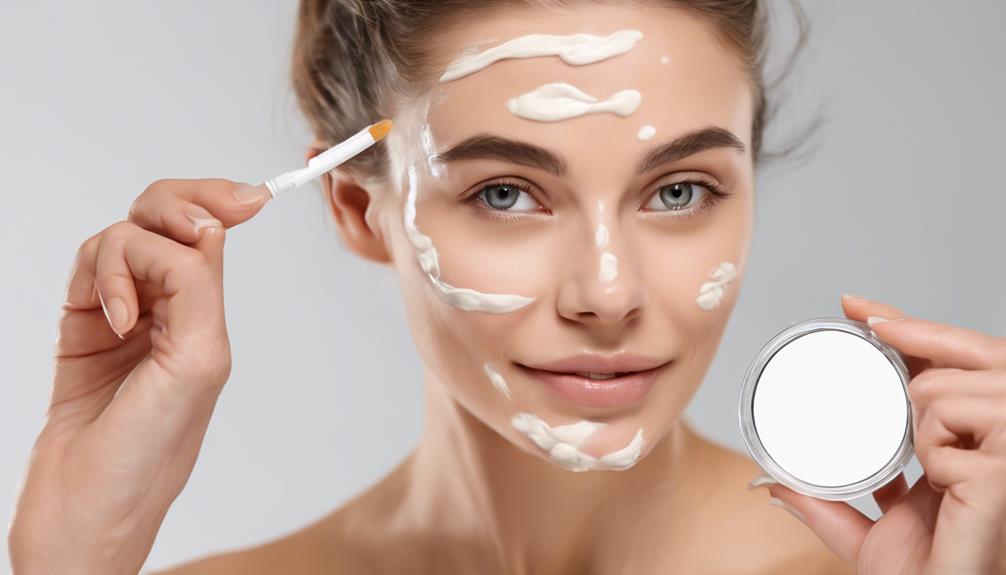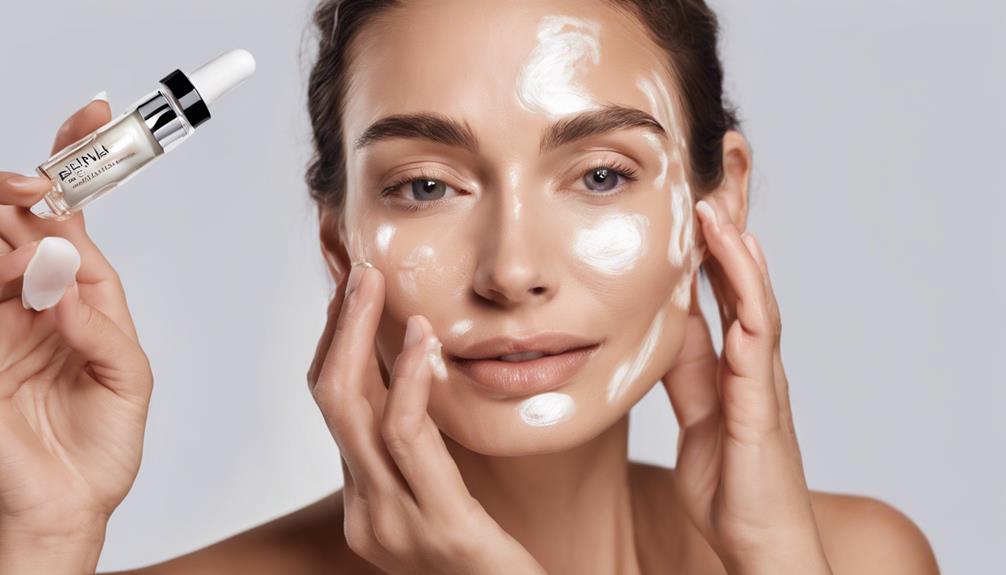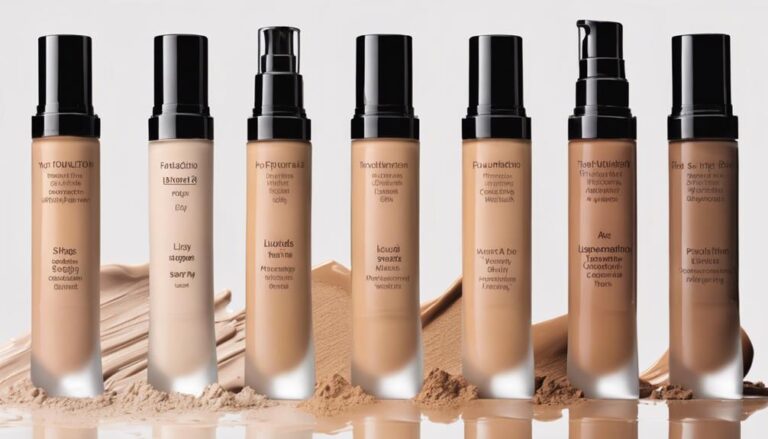How to Use Retinol Products for Youthful, Glowing Skin
You may have heard about the wonders of retinol for achieving youthful, glowing skin, but do you know how to use it effectively? Starting with the right concentration and application frequency is crucial, but there's more to it than just that. Understanding how to introduce retinol into your skincare routine and manage any potential side effects is essential for maximizing its benefits. Stay tuned to discover the key steps to harnessing the power of retinol products for a radiant complexion that stands the test of time.
Benefits of Retinol for Skin
When it comes to skincare, incorporating retinol products can offer a multitude of benefits for your skin. Retinol is a powerful ingredient known for its skin rejuvenation properties and anti-aging benefits. It works by increasing cell turnover, stimulating collagen production, and reducing the appearance of fine lines and wrinkles.
Skin rejuvenation is a key aspect of retinol usage. By promoting cell turnover, retinol helps to reveal fresher, younger-looking skin. This process can result in a smoother complexion with improved texture and tone.
Additionally, retinol's anti-aging properties make it a valuable asset in combating signs of aging. It can help minimize the appearance of wrinkles, fine lines, and age spots, giving your skin a more youthful and radiant appearance.
Incorporating retinol into your skincare routine can have significant long-term benefits, making it a popular choice for those looking to maintain a youthful complexion.
Choosing the Right Retinol Product
To select the right retinol product for your skincare regimen, it's crucial to consider various factors that can impact its effectiveness and compatibility with your skin. When choosing a retinol product, look for ones with a concentration ranging from 0.25% to 1%, especially if you're new to retinol. Some popular product recommendations include Neutrogena Rapid Wrinkle Repair Retinol Oil, The Ordinary Retinol 0.5% in Squalane, and Paula's Choice Clinical 1% Retinol Treatment. These products are known for their effectiveness and gentle formulas suitable for different skin types.
When it comes to application techniques, start by using retinol products at night after cleansing your face. Begin with a pea-sized amount and gradually increase the frequency as your skin adjusts. Remember to follow up with a moisturizer to help minimize any potential dryness or irritation.
Consistency is key when using retinol products, so be patient and give your skin time to adapt to this powerful ingredient for optimal results.
How to Incorporate Retinol Into Your Routine
For optimal results, incorporating retinol into your skincare routine requires a strategic approach. Nighttime application is key when using retinol products due to its photosensitivity. Begin by cleansing your face thoroughly before applying a pea-sized amount of retinol. Frequency is crucial; start by using it every other night to allow your skin to adjust, then gradually increase to nightly use as tolerated.
When it comes to layering retinol in your skincare routine, less is more. After cleansing, apply your retinol product to dry skin, followed by a gentle moisturizer to reduce potential dryness or irritation. Avoid using other active ingredients like AHAs, BHAs, or vitamin C at the same time as retinol to prevent sensitivity.
Incorporating retinol into your nightly routine can help improve skin texture, reduce fine lines, and promote a youthful glow. Remember, consistency is key when using retinol products to achieve the best results.
Tips for Using Retinol Safely
To ensure the safe and effective use of retinol products for your skincare routine, it is essential to be mindful of potential side effects and proper application techniques. Before incorporating retinol into your regimen, conduct a patch test by applying a small amount to a discreet area to check for any adverse reactions. Gradually introduce retinol into your routine to allow your skin to acclimate to this potent ingredient. This can help minimize irritation and maximize the benefits of retinol for your skin. Below is a table summarizing key tips for using retinol safely:
| Tips for Using Retinol Safely |
|---|
| Patch Testing |
| Apply a small amount to a patch of skin to test for reactions. |
| Gradual Introduction |
| Start with a lower concentration and frequency to allow your skin to adjust. |
| Moisturize |
| Keep your skin hydrated to help reduce potential dryness and irritation. |
| Sun Protection |
| Always use sunscreen during the day as retinol can increase sun sensitivity. |
Managing Side Effects of Retinol
Managing side effects of retinol requires a diligent approach to skincare. Minimizing irritation is key when incorporating retinol into your routine. To achieve this, start by using a pea-sized amount of retinol and gradually increase as your skin builds tolerance.
It's essential to apply retinol products at night and always follow up with a moisturizer to help prevent dryness and maintain skin hydration. Additionally, incorporating a gentle cleanser and sunscreen into your daily regimen can further protect your skin from potential irritation and dryness caused by retinol.
If you experience excessive irritation or dryness, consider reducing the frequency of retinol application or consulting a dermatologist for personalized advice. By taking these steps and being mindful of your skin's reactions, you can effectively manage and mitigate the side effects of retinol while still reaping its numerous benefits for youthful, glowing skin.
Frequently Asked Questions
Can Retinol Be Used With Other Active Skincare Ingredients?
When layering products with retinol, prioritize simplicity to avoid reactions. Combining retinol with other active skincare ingredients can enhance benefits, but proceed cautiously. Introduce new products gradually and monitor for any signs of irritation.
Is It Safe to Use Retinol During Pregnancy or Breastfeeding?
While pregnant or breastfeeding, you should avoid using retinol in skincare products. Studies show potential risks to the fetus or infant. Consult your healthcare provider for safe alternatives that promote skin health during this special time.
How Long Does It Take to See Results From Using Retinol?
Results from using retinol vary. Typically, noticeable changes like improved skin texture appear in 4-6 weeks. For optimal retinol effectiveness, consistency is key. Watch for common side effects like dryness or irritation; start slow and consult a dermatologist for guidance.
Can Retinol Make Skin More Sensitive to the Sun?
Yes, retinol can increase sun sensitivity. Ensure adequate sun protection by using SPF daily. Integrate retinol into your skincare routine at night to minimize sun exposure. Consistent application and sun protection are essential for healthy skin.
What Is the Difference Between Prescription and Over-The-Counter Retinol Products?
When choosing between prescription and over-the-counter retinol products, know that prescription options often contain higher concentrations. They are more potent but can also lead to increased sensitivity. Over-the-counter versions are gentler, offering gradual results.
Conclusion
In conclusion, glowing skin is just a pea-sized amount away with retinol products. By starting slow and building up your usage, you can unlock the radiant benefits of this powerful ingredient. Remember, consistency is key to achieving that youthful complexion you desire. So, grab your retinol, slather on some moisturizer, and let your skin shine like a diamond in the sky.











